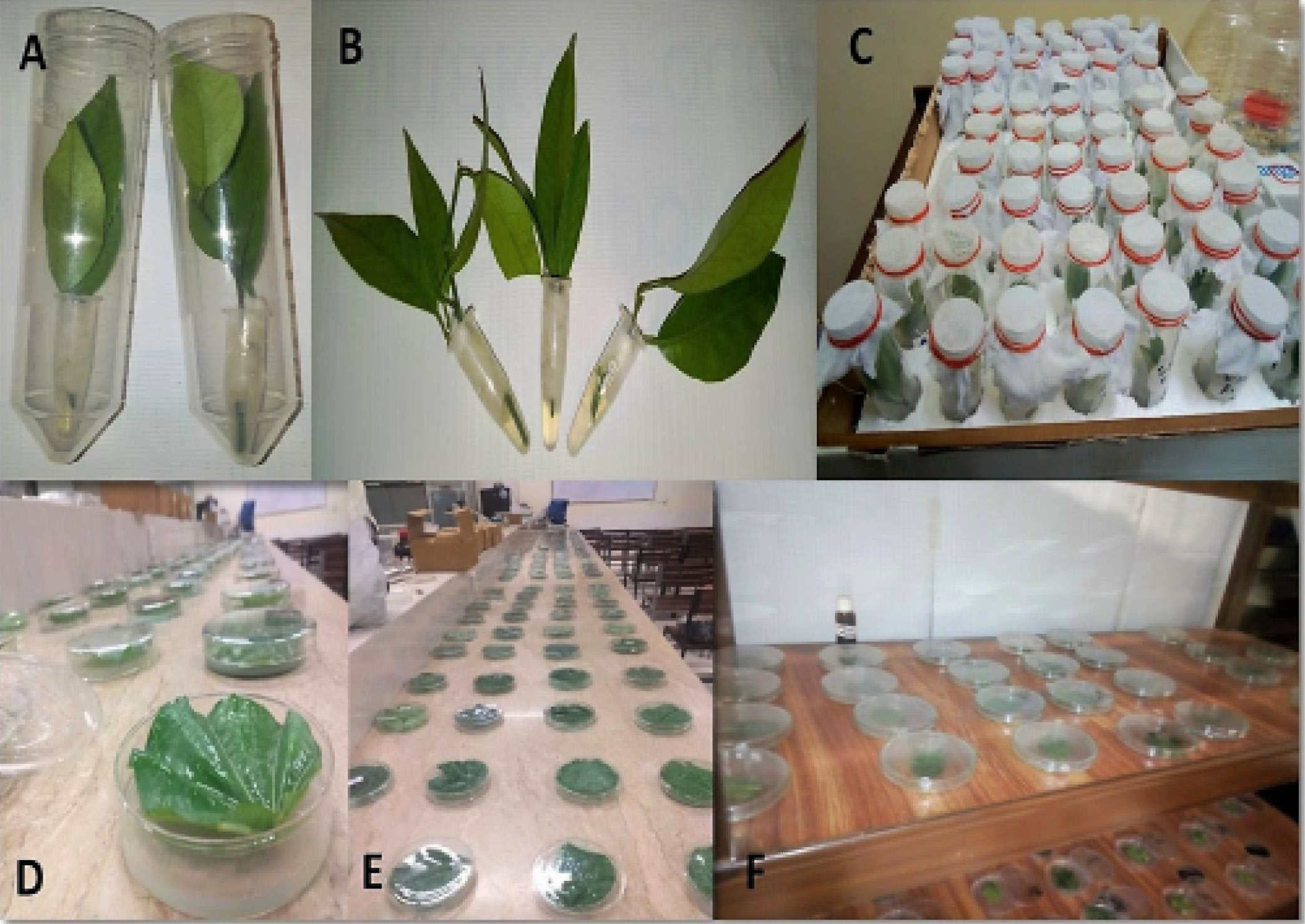Insecticidal Potential of Indigenous Flora of Soon Valley against Asian Citrus Psyllid Diaphorina citri Kuwayama and Cotton Aphid Aphis gossypii Glover
Insecticidal Potential of Indigenous Flora of Soon Valley against Asian Citrus Psyllid Diaphorina citri Kuwayama and Cotton Aphid Aphis gossypii Glover
Muhammad Bilal Tayyab1, Muhammad Zeeshan Majeed1*, Muhammad Asam Riaz1, Muhammad Anjum Aqueel2, Sylvain Nafiba Ouedraogo3, Muhammad Luqman4, Kanwer Shahzad Ahmed1 and Mujahid Tanvir1
Sampling sites regarding the collection of local flora of Soon Valley and surrounding Salt Range of Pakistan.
Twig-dip (A-C) and leaf-dip (D-F) bioassay methods used for the evaluation of toxicity potential of botanical extracts against ACP (D. citri) and cotton aphid (A. gossypii), respectively.
Percent mortality (mean ± SE; n = 10) of cotton aphid (A. gossypii) individuals exposed to different concentrations of botanical extracts observed at different post-exposure time intervals. For each botanical extract, small alphabets indicate statistical difference among time intervals for each concentration, while capital alphabets are indicating the statistical difference among different concentrations (one-way factorial ANOVA; HSD at α = 0.05).











